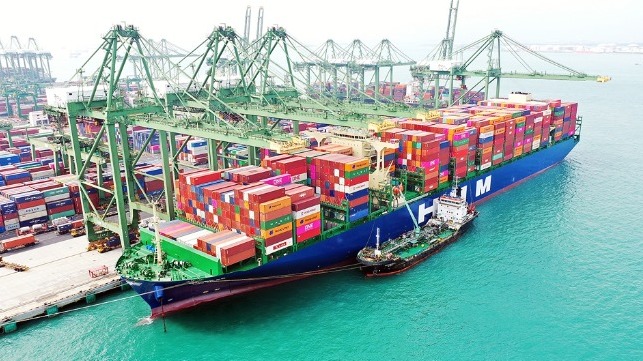South Korea Announces Major Subsidies for Containerized Shipping

The government of South Korea has announced a five-year plan to double down on its financial support for domestic shipping companies, and the details suggest an exceptional level of national commitment to the maritime industry. The plan covers the full breadth of the sector, including everything from newbuild financing for Korean shipowners to freight subsidies for Korean shippers. Its ultimate goal is to become a "global shipping powerhouse" by 2030, with a domestically-controlled fleet totaling 140 million dwt and a container ship fleet with a capacity of 1.5 million TEU.
First, in order to decouple Korean shipowners' costs from market forces, South Korea's policy banks will invest in a new round of ordering subsidies under a "newbuilds policy financing support program." An initial tranche of $1.5 billion will be allocated to the program, followed by an additional $1.5 billion if necessary to meet demand. In addition, the government is underwriting an order for a dozen 13,000 TEU containerships for national flagship carrier HMM, and it is investing in R&D for shipbuilding automation to foster "cost-effective and high-quailty" production.
Meanwhile, the policy bank KOBC will be buying ten ships a year through 2025 and leasing them to Korean shipping lines on "reasonable charter rates" on a bareboat charter basis.
The government also plans to help Korean operators purchase stakes in terminals on the U.S. West Coast in order to "reduce stevedoring charges imposed on Korean shipping lines and improve the reliability of their services." It is calling on Korean port authorities and private businesses to co-invest in building logistics centers in major hub ports overseas, like Port of Barcelona and Rotterdam.
The subsidies will benefit shippers as well. In order to address the impact of recent disruptions in the ocean freight network and soaring container rates, Korean shippers who sign long-term service contracts with domestic shipping lines will receive guaranteed shiplling space and a 20 percent government-backed discount on freight rates. KOBC will spend another $88 million on leasing scarce empty containers to South Korea's small and medium enterprises, helping to reduce equipment cost and availability challenges, and the Export-Import Bank of Korea (KEXIM) will offer financing for buying more.
For the future, the plan calls for a $220 million investment in green shipping technology by the end of the decade. Vessel autonomy research will receive another $140 million, and space at the Port of Gwangyang will be set aside for a testbed for port automation technology.
“In the first half of the five-year plan period, our focus was to restore the status of our shipping industry to the level where it was prior to the collapse of Hanjin Shipping; however, in the remaining second half, our focus will be on the successful implementation of policy agendas set forth under this strategy with an aim of becoming a global shipping powerhouse," said Oceans and Fisheries Minister Moon Seong-Hyeok. "It is expected that the strategy will give a great impetus to the advancement of green shipping technologies, the Busan New Port development project, and the construction of a test bed in the Port of Gwangyang, which is under preliminary feasibility study."
